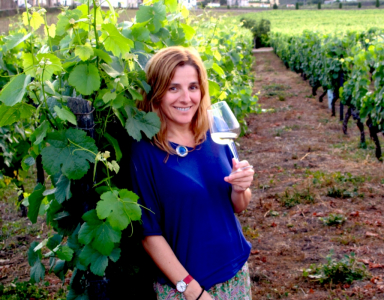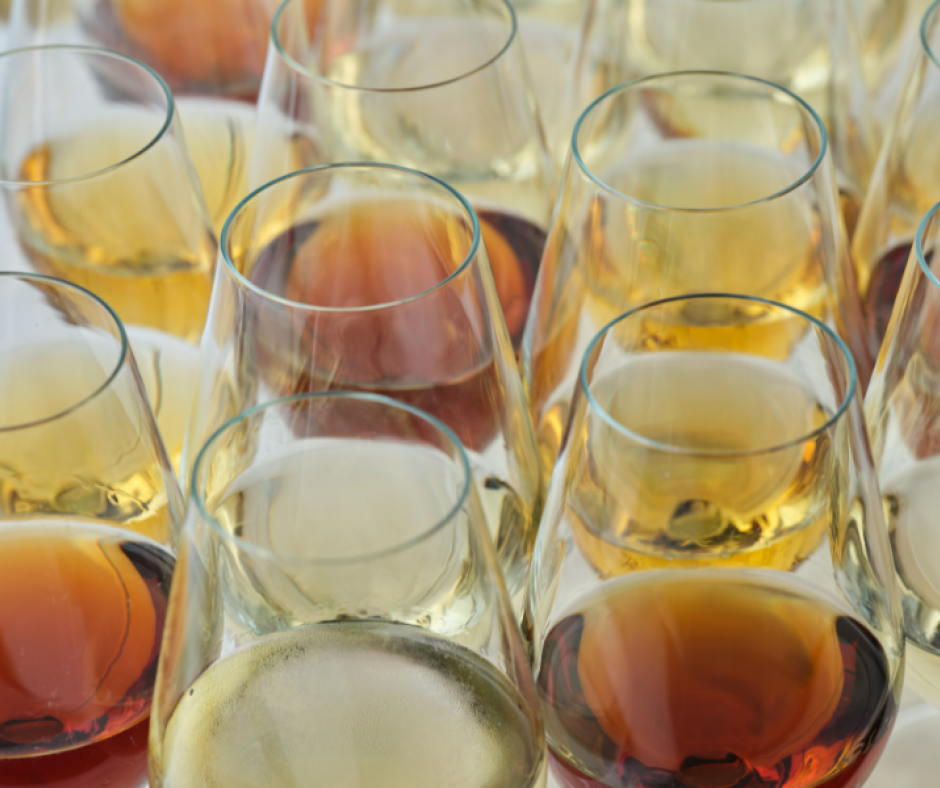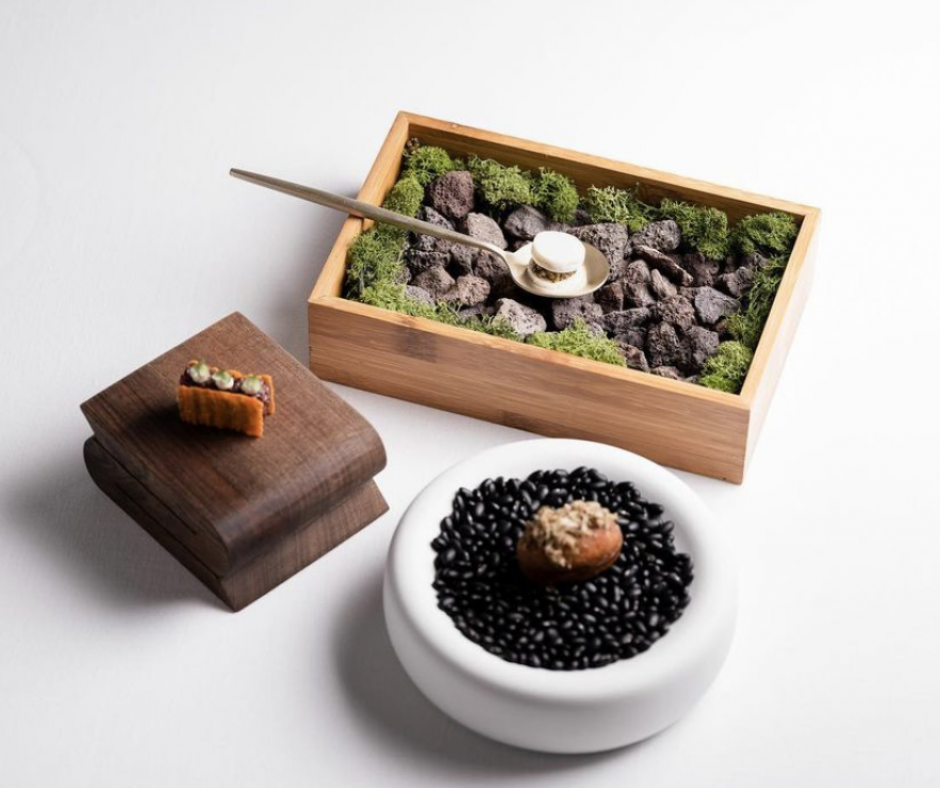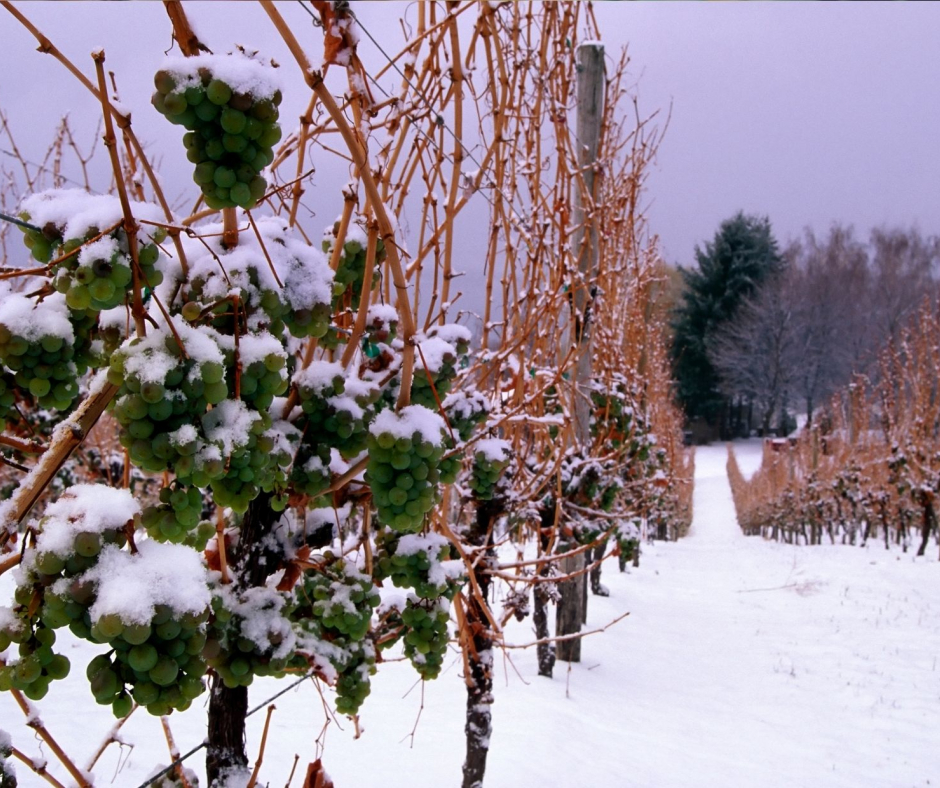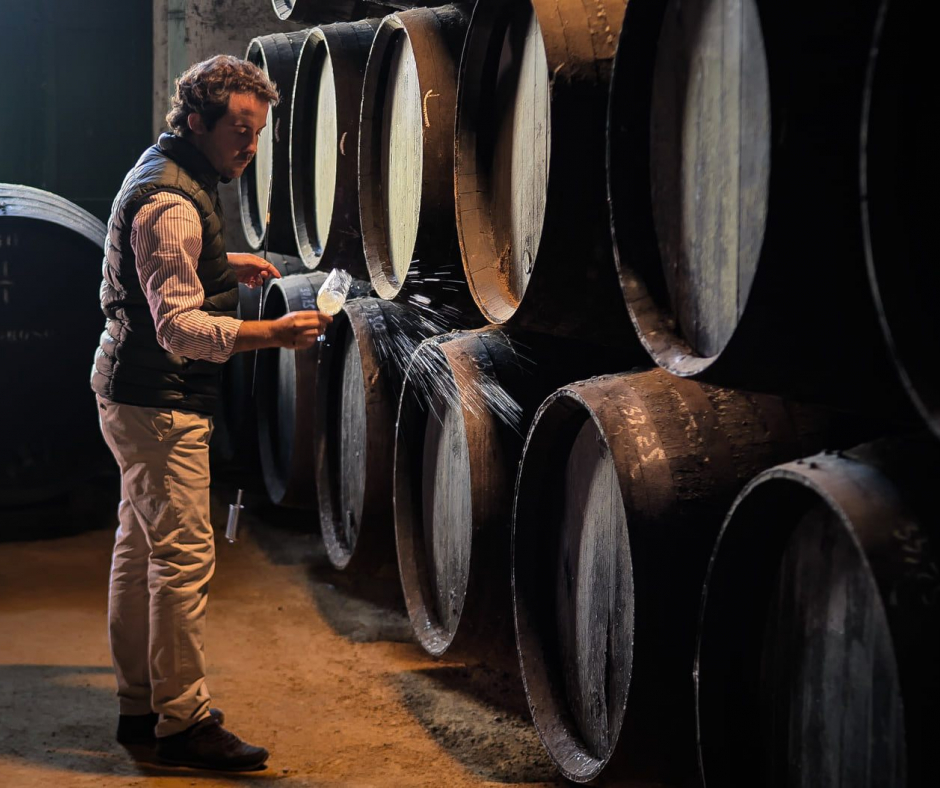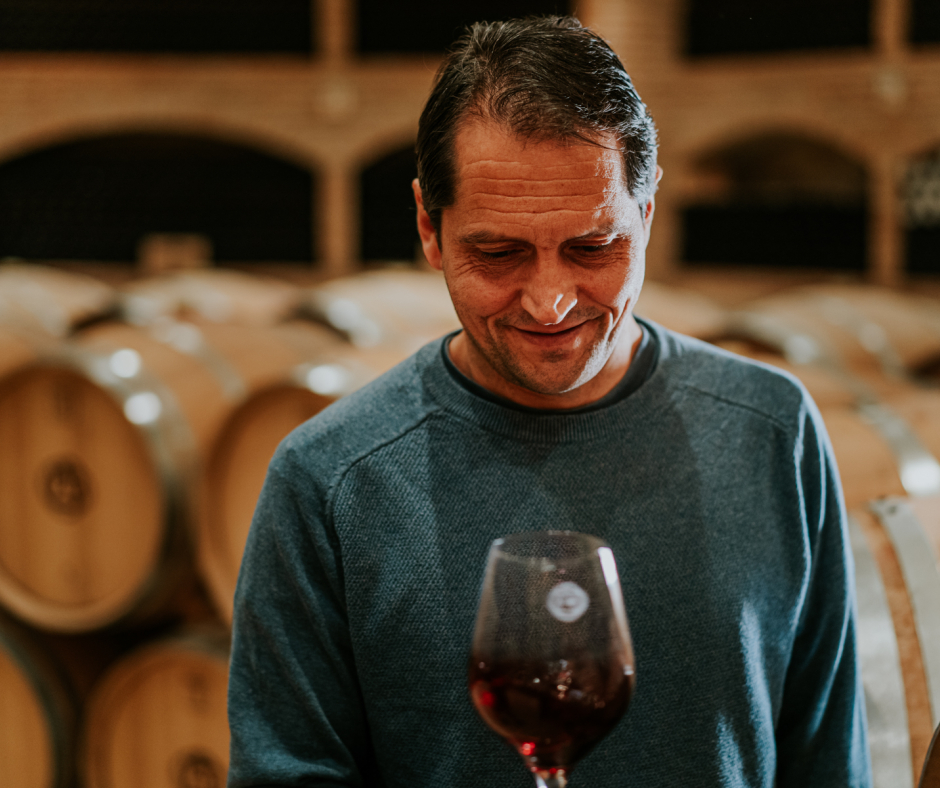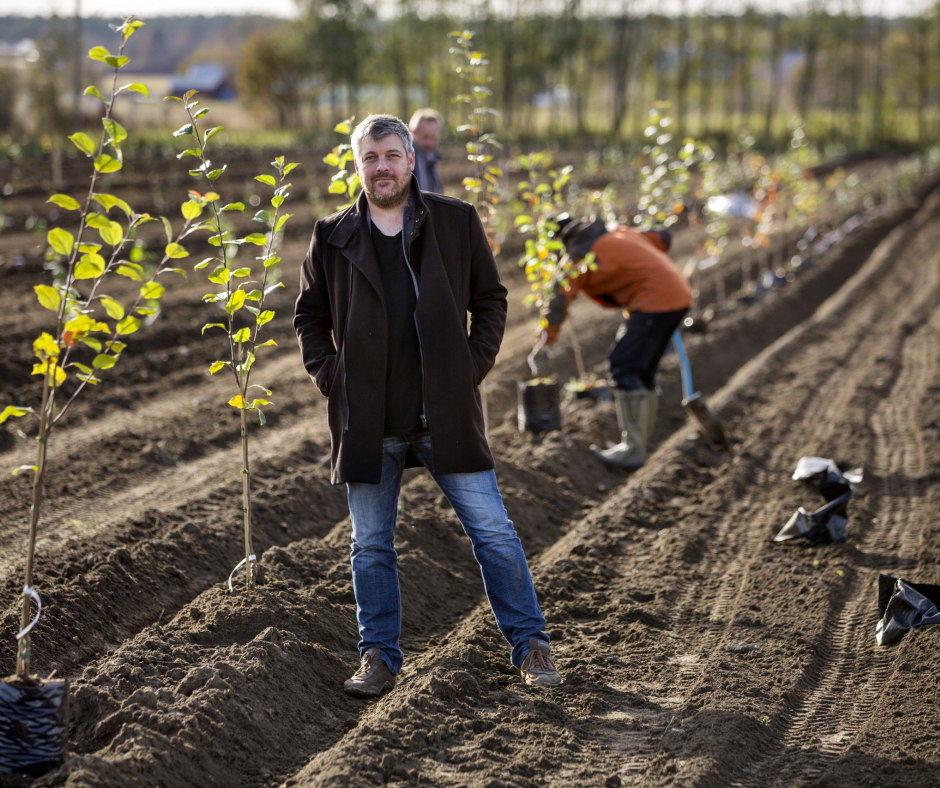In the vast fields and lakes of Canada, the landscape is blanketed by snow and darkness during the winter months. In such freezing temperatures, the best place to be next to the fireplace.
But for the winemakers of the Niagara Peninsula in eastern Ontario province, and Okanagan Valley in British Columbia (known as the Napa of the North), the cold and the ice bring their own precious Christmas gift: ice wines.

These wines are among the most unique on the planet, but they are also some of the most demanding to make. For the producers, each vintage is a game of chance, at the whim of nature as it works its magic. If they succeed, the prize is a treasured elixir that is sweet yet acidic at the same time, and with good aging capacity.
The origin of ice wine is believed to date back to 18th-century Germany. Its production process was discovered by chance in 1794, when grapes were frozen by an unexpected frost in the vineyard. One winegrower, determined to save his crop, harvested them and discovered that the resulting wine was aromatic and exceptionally sweet.
Despite the surprisingly favourable outcome, ice wine was not produced on a regular basis until 170 years later. As the wine’s production was subject to the vagaries of the weather, winemakers preferred not to risk their harvests until technological advances made the process commercially viable. Since then, having an eiswein on your wine list has been a symbol of prestige.

Dependent on nature
Ice wine is the result of a process pushed to its limit. Instead of harvesting the grapes in September or October, as is customary in the northern hemisphere, the winegrowers leave the fruit on the vines until winter, when ice has naturally enveloped each grape berry. The sugar does not freeze, yielding a more concentrated juice.
The exact day of harvest is often not decided until a few hours before going to the vineyard. All the right conditions must be met; if any of them are not, the quality of the ice wine can suffer.

These are often stressful days for winemakers, explains Dr Dirk Richter, owner of Weingut Max Ferdinand Richter, a winery on the banks of the Mosel River in Germany with more than 300 years of family history. "Making ice wine is like gambling in a casino. Mentally, you have to write off the grapes, and just hope for the best," Dr Richter explains.
Makers of ice wine are well aware that they are taking a big gamble by leaving the finest quality grapes unharvested. These growers have to wait weeks until the weather forecast announces a cold snap that may never even arrive. If it finally does, ice wine producers have to be prepared to go out to the vineyard on the optimal day for harvesting, which could fall on a holiday such as Christmas Day or New Year's Day.
At harvest time, ideally at a temperature of between -8 and -10 deg. C, pickers must wear warm clothing and gloves to protect themselves from the cold, even though such garments make the task more complicated. To harvest the fruit, the grape-pickers who work with Dr Richter must negotiate both the ice and the protective nets. These are placed over the vines in summer to prevent wild boars from eating the grapes, as happened in 1991. Since then, an electrified fence has protected Dr Richter’s vineyard.
The grape harvesters pick the frozen grapes and place them in boxes. Then they are pressed immediately, before the ice crystals inside the grapes start to break. From these grapes - it takes between three and four kilos of grapes to produce a 37.5cl bottle - a tiny amount of concentrated juice is extracted. It is extraordinarily sweet yet with remarkable natural acidity; this is the essence of a good ice wine.

Canada – the leading producer
Patience and organisation are two essential qualities that are prized in ice wine vineyards. However, even if these qualities are present, harvests are not guaranteed, as frequently happens in Germany and Austria (also a producer of ice wine). In these countries, the arrival of the winter cold is more complicated than in Canada, the main ice wine producer in the world today. The pioneering winery was Hainle Vineyards Estate Winery on the shore of Lake Okanagan, which produced the first bottles of ice wine in North America in 1978.
The most common varieties used to make these wines - white, red and even sparkling - are Riesling, as well as Vidal and Cabernet Franc in Canada; others such as Gewürtztraminer and Merlot are also used.
Inniskillin is one of Canada's leading ice wine exporters, with vineyards in the Okanagan and Niagara. The early days of this winery were complicated. On its first attempt in 1983, Inniskillin was unable to harvest, because birds had eaten the grapes the day before. (Relative) luck was on the side of another winery, Pelee Island Vineyards. Located on Lake Erie, in the middle of the migratory bird route, the owners took the precaution of installing netting in the vineyard. Even with that protection, now customary in all plots where grapes are left on the vines until winter, the birds ate $25,000 worth of grapes. Thankfully, however, the goal was still achieved: Pelee Island managed to make 50 cases of ice wine.
Today the biggest importer of Canadian ice wine is China, where consumers are willing to pay top dollar for this icy elixir. As with branded jewellery or perfumes, ice wine is also the subject of counterfeiting, especially in Asia. In fact, Canadian ice wine is said to be the most copied wine in the world, even ahead of Grand Crus from Bordeaux and Burgundy. For this reason, it is important to make sure that the words “ice wine” or “eiswein” appear on the label when you want to enjoy an authentic ice wine, as wines are not allowed to be labelled as “ice wine” if grapes are commercially frozen.

Ice wine production in Spain
The climate in Spain means that it is impossible to make these wines from naturally frozen fruit. However wineries like Gramona have produced an interesting alternative, with its Vi de Glass. Instead of freezing naturally on the vine, as is mandatory for ice wines, the grapes – namely Gewürztraminer, Riesling and Xarel-lo varieties – are placed in huge freezers.
The production method and price of Spanish ice wines (about 17€ for a 37.5cl bottle, compared to 60-90€ for a German or Canadian ice wine imported to Spain) are nowhere near as extreme as those of naturally-made ice wines.
Which foods should you pair with ice wine?
Although they are traditionally served with desserts, these wines are also an excellent accompaniment to foie gras, spicy Asian food and blue cheese, whose strong flavours are complemented by the wine’s natural acidity. On the website for Wine Country Ontario, Canada's main producing area, the recommended serving temperature is 10 deg. C, in other words cool but not cold; in small servings; and never with desserts that are sweeter than the wine.
Tasting a quality ice wine, as everyone who attends Vinoble 2022 will find out, is an unforgettable experience: the combination of the fruit, the wine’s unctuous texture, and its sweetness, offset by a marked acidity, is a delight for the senses. This is a wine of extremes – both in characteristics, and its highly unusual method of production.
